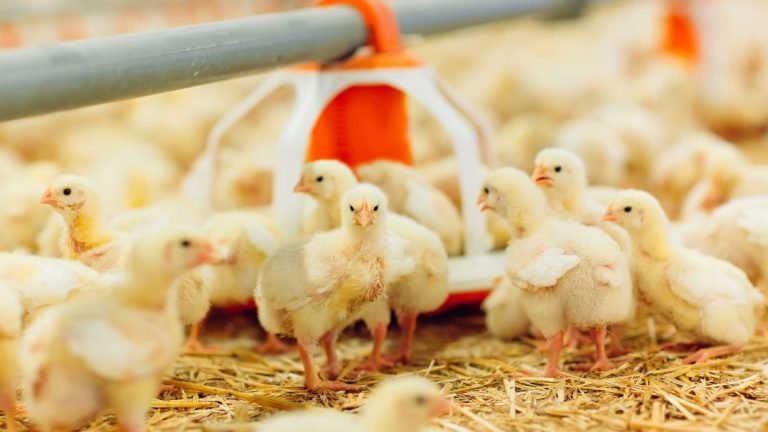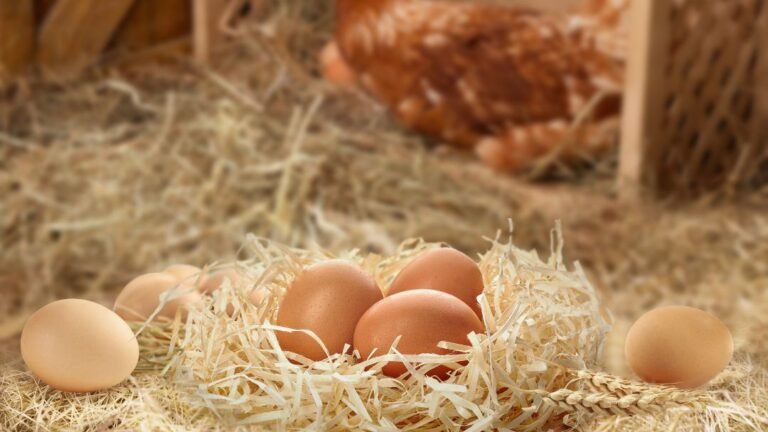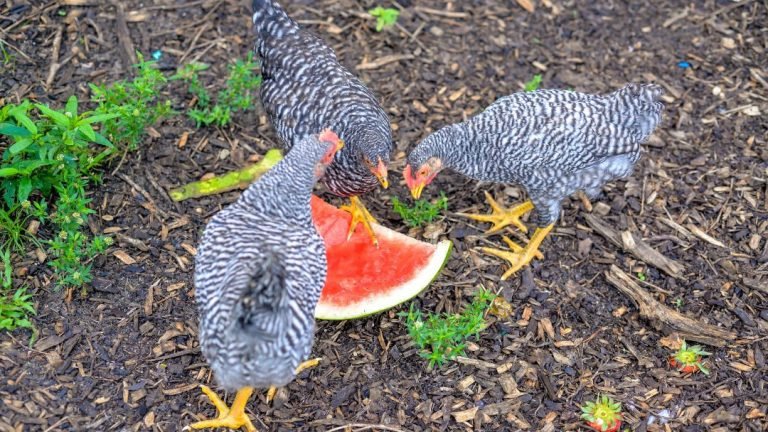The Dutch Bantam is a small breed of chicken that originated in the Netherlands. It is known for its compact size, distinctive appearance, and friendly disposition.
With its striking plumage and dainty size, the Dutch Bantam is a popular choice for backyard poultry enthusiasts and exhibitionists alike.
What Are Dutch Bantams?
Characteristics Of Dutch Bantams
Dutch Bantams, also known as Nederlandse Kriel, are a small and delightful breed of chicken that originate from the Netherlands. These petite birds are popular among poultry enthusiasts for their unique characteristics and striking appearance.
One of the standout features of Dutch Bantams is their size. They are the smallest breed of bantam chicken, with roosters weighing around 500 grams and hens weighing approximately 400 grams. Despite their small stature, these bantams are full of personality.
Another distinguishing characteristic of Dutch Bantams is their wide range of color variations. These birds come in an array of beautiful colors, including white, black, silver, and gold. They can also exhibit intricate patterns and markings, making them a captivating addition to any flock.
Their sturdy and compact bodies are another notable trait of Dutch Bantams. They have a short and broad back, well-rounded breast, and a vibrant plumage. Additionally, their tails are held high, giving them a confident and proud posture.
Historical Background Of Dutch Bantams
The history of Dutch Bantams can be traced back to the 17th century in the Netherlands. These unique birds were first bred by Dutch farmers and were primarily kept for their ornamental value. Over time, Dutch Bantams became popular as exhibition birds due to their charming appearance and friendly nature.
During World War II, Dutch Bantams nearly faced extinction. Thankfully, a small group of dedicated breeders worked diligently to safeguard and revive the breed. Their efforts paid off, and today, Dutch Bantams are celebrated not only for their historical significance but also for their role in enriching the world of poultry breeding.
Unique Features And Appearance Of Dutch Bantams
Dutch Bantams possess several unique features and an eye-catching appearance that set them apart from other chicken breeds. One striking characteristic is their prominent single comb, which is large and erect. This comb adds to their overall distinctive look.
These bantams also have a unique head shape with a well-proportioned beak and wattles. Their eyes, although small, are bright and expressive, reflecting their alert and inquisitive nature. Furthermore, Dutch Bantams boast feathered shanks and four toes, which contribute to their elegant and charming appearance.
Table: Dutch Bantam Characteristics
| Characteristic | Description |
|---|---|
| Size | Smallest breed of bantam chicken, with rooster weighing around 500 grams and hen weighing approximately 400 grams |
| Color Variations | Come in an array of beautiful colors, including white, black, silver, and gold, with intricate patterns and markings |
| Body Structure | Sturdy and compact body, short and broad back, well-rounded breast, vibrant plumage, and held high tail |
| Comb and Head | Prominent single comb, large and erect, unique head shape with well-proportioned beak and wattles |
Choosing Dutch Bantams As Pets
Suitable Living Conditions For Dutch Bantams
Creating a suitable living environment for your Dutch Bantams is crucial to their well-being and happiness as pets. These small, friendly chickens thrive in both urban and rural settings, making them a versatile choice for pet owners. Whether you have a large backyard or a small urban garden, Dutch Bantams can adapt to various living conditions.
To provide the best living conditions for your Dutch Bantams, keep the following factors in mind:
- Space: Dutch Bantams require less space compared to larger chicken breeds. A minimum of 2 square feet per bird in a coop, and at least 8 square feet per bird in an outdoor run is recommended. This allows them to roam and exercise freely.
- Protection: As a smaller breed, Dutch Bantams are more vulnerable to predators. Ensure their coop and outdoor run are secure with sturdy fencing and a covered top to protect them from predators like raccoons and hawks.
- Shelter: Provide a well-insulated and ventilated coop that protects them from extreme weather conditions. Dutch Bantams are hardy birds but still need a sheltered space to roost, lay eggs, and escape from extreme temperatures.
- Foraging area: Allow your Dutch Bantams access to a secure and spacious foraging area where they can scratch the ground and search for insects and plants. This not only keeps them mentally stimulated but also provides them with a natural and balanced diet.
- Perches and nesting boxes: Install perches at different heights inside the coop, as Dutch Bantams love to perch. Additionally, provide nesting boxes filled with soft bedding for them to lay their eggs.
Benefits Of Keeping Dutch Bantams As Pets
Dutch Bantams offer a range of benefits as pets, making them a popular choice among poultry enthusiasts. Here are a few reasons why they make excellent companions:
- Size: Due to their small size, Dutch Bantams require less space compared to larger chicken breeds. This makes them suitable for urban environments with limited backyard areas.
- Friendliness: Dutch Bantams have a friendly and social nature, making it easy for them to bond with their owners. They are known for their inquisitive personality and enjoy human interaction, often seeking attention and affection.
- Low maintenance: As a relatively low-maintenance breed, Dutch Bantams are an ideal choice for first-time chicken keepers. They require less food, produce fewer droppings, and have lower housing requirements compared to larger breeds.
- Feather variety: Dutch Bantams come in a wide range of feather patterns and colors, adding aesthetic appeal to your backyard or garden. Their unique appearance makes them a joy to observe and show off to visitors.
- Strong egg layers: Though small in size, Dutch Bantams are surprisingly productive egg layers, producing small to medium-sized eggs. On average, they lay around three to four eggs per week, making them a valuable addition to your flock if you enjoy collecting fresh eggs.
Tips For Selecting Healthy Dutch Bantams
When choosing Dutch Bantams as pets, it’s important to select healthy and thriving birds to ensure a positive experience. Consider the following tips before purchasing or adopting your Dutch Bantams:
- Choosing a reputable breeder or supplier: Look for breeders or suppliers with a good reputation, who focus on breeding Dutch Bantams in a healthy and ethical manner. They should provide clear information about the birds’ health, diet, and housing conditions.
- Physical appearance: Observe the birds carefully to ensure they have bright eyes, clean nostrils, and shiny, well-groomed feathers. Avoid birds that appear lethargic, have matted feathers, or show signs of injury or illness.
- Active and alert behavior: Healthy Dutch Bantams are energetic and alert. They should be actively moving around, showing curiosity in their surroundings, and interacting with other birds.
- Good weight and body condition: Check that the Dutch Bantams have a good body condition, neither too thin nor overweight. Their feathers should be smooth and free from lice or mites.
- Healthy leg and foot structure: Examine the birds’ legs and feet for signs of deformities, injuries, or swelling. Healthy Dutch Bantams should have strong, well-formed legs and clean, unblemished feet.
Caring For Dutch Bantams
Dutch Bantams are small, friendly, and beautiful chickens that make wonderful pets. But just like any other pet, they require proper care and attention to stay happy and healthy. In this section, we will discuss the important aspects of caring for Dutch Bantams, including their nutrition, grooming, and health issues. By following these guidelines, you can ensure that your Dutch Bantams thrive and enjoy a long and lovely life.
Proper Nutrition And Feeding Tips
Providing your Dutch Bantams with a balanced and nutritious diet is essential for their overall well-being. These small chickens have specific dietary needs, and it’s important to meet them to ensure their optimal health. Here are some feeding tips to help you:
- Offer a variety of foods: Include a mix of commercial chicken feed, fresh vegetables, fruits, and grains in their diet. This will ensure they receive all the necessary nutrients.
- Provide clean water: Fresh and clean water should be readily available to your Dutch Bantams at all times. Replace the water regularly to prevent contamination.
- Avoid overfeeding: Overfeeding can lead to obesity and other health problems. Follow the recommended feeding guidelines based on your Dutch Bantams’ age and weight.
- Supplement with calcium: Dutch Bantams, like all chickens, require sufficient calcium for strong eggshells and overall bone health. Offer oyster shells or crushed eggshells as a calcium supplement.
Grooming And Maintenance Of Dutch Bantams
Dutch Bantams have beautiful feather patterns that require regular grooming and maintenance. By keeping up with their grooming needs, you can ensure their feathers stay healthy and vibrant. Here are some tips for grooming your Dutch Bantams:
- Feather inspection: Regularly check your Dutch Bantams’ feathers for any signs of parasites, such as lice or mites. If you notice any issues, treat them promptly to prevent discomfort.
- Bathing: While Dutch Bantams are generally clean birds, they may occasionally benefit from a gentle bath to remove dirt. Use lukewarm water and a mild chicken-friendly shampoo. Ensure they are fully dried before exposing them to cold temperatures.
- Beak and nail care: Trim your Dutch Bantams’ beak and nails regularly to maintain their health. Overgrown beaks and nails can cause discomfort and difficulty in eating and walking.
- Dust bathing: Provide a dust bathing area with fine sand or dry soil for your Dutch Bantams. Dust bathing helps them maintain clean and healthy feathers by removing excess oil and parasites.
Common Health Issues And Preventive Measures
While Dutch Bantams are generally healthy birds, they can still be susceptible to certain health issues. Being aware of common health problems and taking preventive measures can help keep your Dutch Bantams in top shape. Here are some common health issues and how to prevent them:
| Health Issue | Preventive Measures |
|---|---|
| Respiratory infections | Ensure proper ventilation in the coop, maintain cleanliness, and quarantine new birds before introducing them to your flock. |
| Parasites | Regularly inspect and treat your Dutch Bantams for external parasites. Keep their coop clean and provide dust baths for natural parasite control. |
| Poor egg production | Ensure a balanced diet, provide access to fresh water, and create a stress-free environment. |
| Heat stress | Provide ample shade and fresh water during hot weather. Ensure proper ventilation in the coop. |
By keeping an eye on your Dutch Bantams’ health and taking preventative measures, you can minimize the risk of common health issues and promote their well-being.
Training And Socializing Dutch Bantams
Importance Of Training Dutch Bantams
Training is essential for Dutch Bantams to ensure they are well-behaved, confident, and responsive. Proper training helps them understand and follow commands, establishes boundaries, and fosters a positive relationship between owners and birds. The right training techniques not only lead to a well-rounded pet, but also contribute to the overall health and happiness of Dutch Bantams.
Positive Reinforcement Techniques For Training
Positive reinforcement is a highly effective training technique when it comes to Dutch Bantams. This technique involves rewarding desired behaviors with treats, praise, or other forms of positive reinforcement. By associating positive experiences with specific behaviors, Dutch Bantams are encouraged to repeat those behaviors in the future, making the training process easier and more enjoyable for both the owner and the bird.
It’s important to remember that each bird is unique and may respond differently to various training methods. Some Dutch Bantams may be more motivated by treats, while others may respond better to verbal praise or playtime. Observing and understanding your bird’s preferences will enable you to tailor your training approach accordingly, maximizing the effectiveness of positive reinforcement techniques.
How To Foster Social Interaction Among Dutch Bantams
Socializing Dutch Bantams is vital for their mental and emotional well-being. Creating opportunities for social interaction helps them develop good social skills and reduces the risk of behavioral problems. Here are some tips to foster socialization among Dutch Bantams:
- Start socializing them at a young age to ensure they grow accustomed to being around different people and animals.
- Introduce them to various environments, sounds, and stimuli to prevent fear or anxiety later on.
- Allow supervised interactions with other Dutch Bantams, ensuring compatibility and monitoring for any signs of aggression.
- Arrange playdates with well-behaved and vaccinated birds to encourage positive social exchanges.
- Offer treats, toys, or activities that promote shared experiences and cooperative play.
The key to successful socialization is gradual exposure and positive reinforcement. Take it slow, be patient, and celebrate each small step towards confident and friendly Dutch Bantams.
Breeding And Reproduction Of Dutch Bantams
Welcome to another informative post about the wonderful world of Dutch Bantams! These small and delightful chickens have captured the hearts of many backyard poultry enthusiasts. In this section, we will explore the fascinating topic of breeding and reproduction of Dutch Bantams. Whether you are an experienced breeder or just starting out, this guide will provide you with valuable insights and tips to ensure a successful breeding program.
H3breeding Considerations For Dutch Bantams/h3
When it comes to breeding Dutch Bantams, there are a few key considerations to keep in mind. The first is to select healthy and strong breeding stock. Look for birds that exhibit the desired breed characteristics and have good temperament. It’s also important to consider the genetic diversity of your breeding flock to avoid inbreeding and maintain strong, healthy lines.
Additionally, it’s crucial to provide your Dutch Bantams with the appropriate housing and environment for breeding. Ensure that they have adequate space, comfortable nesting boxes, and a clean and sanitary environment. A stress-free environment is essential for successful breeding and reproduction.
Another consideration is the ratio of roosters to hens. Dutch Bantams can have a higher ratio of roosters to hens compared to larger chicken breeds. A ratio of one rooster for every three to five hens is generally recommended to ensure fertility and minimize aggression.
H3incubation And Hatching Of Dutch Bantam Eggs/h3
When it comes to incubating and hatching Dutch Bantam eggs, there are a few important factors to consider. The first is to select fertile eggs from healthy and reliable breeding pairs. Look for eggs that are clean, well-shaped, and free from cracks or defects.
Temperature and humidity control are critical during the incubation process. The optimal temperature for Dutch Bantam eggs is around 99.5 degrees Fahrenheit (37.5 degrees Celsius). Humidity levels should be maintained at around 50-60% for the first 18 days and increased to 65-75% during the last few days of incubation. It’s important to regularly monitor and adjust these levels to ensure the best chance of a successful hatch.
Once the eggs start hatching, it’s important to provide a safe and warm environment for the chicks. Ensure that the brooder temperature is around 95 degrees Fahrenheit (35 degrees Celsius) during the first week and gradually decrease it by 5 degrees Fahrenheit (2.8 degrees Celsius) each week until reaching the ambient temperature. This gradual temperature reduction will help the chicks acclimate and thrive.
H3succession Planning For Breeding Dutch Bantams/h3
Succession planning is an essential aspect of breeding Dutch Bantams. It involves careful selection and management of breeding stock to ensure the continuation of desirable traits and maintain genetic diversity. By implementing a well-thought-out succession plan, you can achieve long-term breeding success.
One approach is to keep detailed records of each bird’s lineage, characteristics, and breeding outcomes. This will enable you to track their performance over time and make informed decisions when selecting the next generation of breeding stock. It’s important to assess each bird’s conformation, temperament, and fertility to determine their suitability for breeding.
Regularly evaluating your breeding program and making adjustments as necessary is also vital. By culling underperforming or undesirable birds, you can improve the overall quality of your flock and maintain the desired breed standards. This continuous improvement process ensures that each generation of Dutch Bantams is better than the last.
In conclusion, breeding and reproduction are integral parts of maintaining and improving Dutch Bantam populations. By considering important breeding factors, following proper incubation and hatching practices, and implementing a succession plan, you can create a thriving and sustainable breeding program for these delightful chickens.
Conclusion
The Dutch Bantam is a small and unique breed of chicken that holds a special place in the hearts of poultry enthusiasts. Its striking appearance, friendly nature, and ability to thrive in various environments make it a popular choice for backyard flocks.
Whether you are a seasoned chicken keeper or a beginner, the Dutch Bantam is sure to bring joy and beauty to your flock. Consider adding these charming birds to your poultry family and experience the delights they have to offer.




